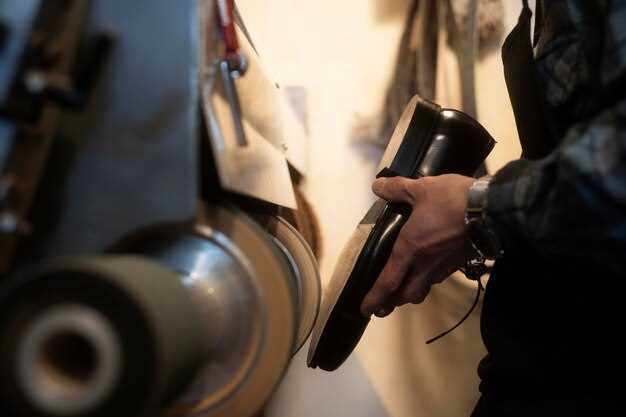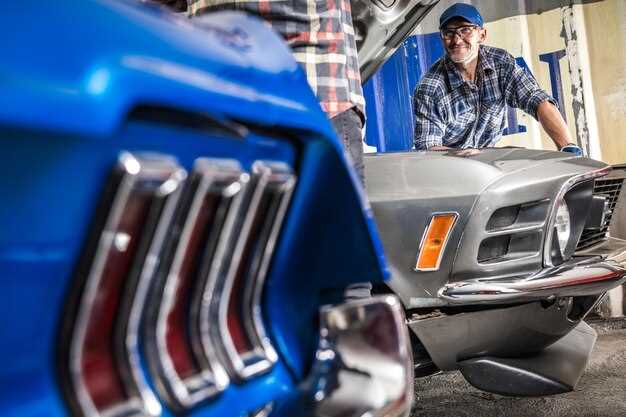How to Start a Classic Car Restoration Project

The journey of classic car restoration is an exciting endeavor that combines passion, patience, and skill. This project is not just about reviving an old vehicle; it’s about breathing new life into a piece of automotive history. Whether you are a seasoned mechanic or a novice enthusiast, understanding the process of restoration can make a significant difference in the outcome of your project.
Restoration involves more than mere repairs; it requires a thorough approach that addresses both the aesthetic and mechanical aspects of the car. From sourcing original parts to ensuring the vehicle’s performance meets modern standards, each step in the restoration process is crucial. This guide aims to provide a comprehensive overview, offering valuable insights that can help streamline your restoration project and avoid common pitfalls.
As you embark on your classic car restoration project, it’s essential to set realistic goals and deadlines. A clear plan not only keeps you organized but also helps in tracking progress. In this guide, we will cover the key phases of restoration, including assessment, planning, disassembly, and reassembly. Additionally, we will discuss the importance of documentation and the intricate balance between originality and personal preference, allowing you to create a car that reflects both your vision and the car’s heritage.
Choosing the Right Classic Car for Restoration
Selecting the appropriate classic car for your restoration project is a critical first step that can significantly influence your overall experience and satisfaction. Begin by assessing your interests and preferences. Consider what era or style resonates with you, whether it’s a sleek coupe from the 1960s or a rugged muscle car from the 1970s. This personal connection will keep you motivated throughout the restoration process.
Next, evaluate the car’s condition. Look for models with a solid chassis and minimal rust, as these factors will affect the restoration’s cost and complexity. A vehicle with its original parts can enhance value, but it is essential to verify their condition and availability of replacements if needed.
Research the availability of resources for the specific make and model. Some classic cars have extensive communities, forums, and parts suppliers, making restoration easier. Others may have limited support, leading to challenges in sourcing necessary components.
Consider the long-term commitment involved in restoration. Your selected car should have a reasonable balance between your budget, desired timeline, and the level of expertise required. Additionally, factor in your future plans for the vehicle; whether you intend to show it, drive it regularly, or keep it as an investment can influence your choice.
Finally, always take the time to inspect the vehicle thoroughly before making a purchase. A hands-on examination will reveal hidden issues that photos might not depict. Engaging with local classic car clubs or specialists can provide valuable insights and tips on which models are the most rewarding for restoration projects.
Essential Tools and Supplies for Classic Car Restoration

Restoring a classic car is an exciting and rewarding project that requires careful planning and the right tools. Here’s a list of essential tools and supplies you will need to ensure the success of your restoration journey.
Hand Tools: A good set of hand tools is the foundation of any restoration project. Basic items include wrenches, pliers, screwdrivers, and hammers. These tools will help you tackle various tasks, from disassembling components to making adjustments.
Power Tools: Incorporating power tools like drills, grinders, and sanders can significantly enhance efficiency. A portable electric drill, for example, enables you to remove rust and paint from metal surfaces quickly, while a sander can help achieve a smooth finish for painting.
Automotive Jacks and Stands: Safety should always be a priority. Investing in sturdy jacks and jack stands will allow you to safely lift and secure your car while you work underneath it, making repairs and maintenance much easier and safer.
Compression Tester: To assess engine health, a compression tester is crucial. It measures the pressure in each cylinder, helping you identify issues like worn piston rings or valves, which are common in older vehicles.
Rust Treatment Supplies: Many classic cars suffer from rust damage. Supplies such as rust converters, sandpaper, and wire brushes will be necessary to effectively treat affected areas before painting or bodywork is undertaken.
Paint and Finishing Supplies: Choosing the right paint and finishing supplies is vital for achieving a professional look. You’ll need primers, base coats, clear coats, and the necessary equipment like paint guns and respirators to ensure quality results.
Engine Hoist: If your project involves engine work, an engine hoist is invaluable. It allows you to safely remove and install heavy engine components without risking injury or damage to the vehicle.
Workshop Manual: A detailed workshop manual specific to your car model is an essential resource. It provides valuable information on specifications, torque settings, and procedures that can guide you through the restoration process.
Miscellaneous Supplies: Don’t forget about gloves, safety glasses, masks, and a first-aid kit. These items may not directly contribute to your restoration, but they ensure a safe working environment while you tackle your classic car project.
Equipping yourself with these essential tools and supplies will not only make your classic car restoration project more manageable but also more enjoyable as you witness your vehicle regain its former glory.
Step-by-Step Process of Restoring Bodywork and Paint

Restoring the bodywork and paint of a classic car is a crucial part of any restoration project. It significantly impacts both appearance and value. Follow these detailed steps for a successful restoration.
First, assess the extent of the damage. Examine the body for rust, dents, and structural issues. This step will help you determine what materials and tools you’ll need for the project.
Next, gather your supplies. You will require tools such as sanders, grinders, body fillers, and paint sprayers. Additionally, gather materials like primers, paints, clear coats, and rust inhibitors. Ensure you have sufficient protective gear, including gloves and masks.
Begin the restoration by removing any old paint. Use a sander or a chemical paint stripper to strip the existing finish. This step is essential for achieving a smooth surface for the new paint.
After stripping the paint, address any body damage. Fill dents and scratches using body filler. Apply the filler in thin layers for a smooth finish and sand it down once cured to ensure it blends seamlessly with the surrounding area.
Once the bodywork is repaired, it’s time to treat any rust. Apply a rust inhibitor to the affected areas to prevent future corrosion. This step is vital for long-term durability.
Proceed to prime the car body. A quality primer provides a strong foundation for the paint and improves adhesion. Ensure you apply the primer evenly and allow it to dry completely before sanding for a smooth surface.
Now, it’s time to paint the car. Choose a color that fits your vision for the project. Apply the paint using a spray gun for even coverage. Multiple thin coats will yield the best result. Allow each coat to dry before applying the next.
Finally, finish with a clear coat to protect your paint job. This layer adds gloss and shields the paint from UV rays and environmental damage. Once the clear coat is dry, it’s essential to buff the surface to achieve a deep shine.
In conclusion, restoring bodywork and paint requires careful planning and execution. By following this step-by-step guide, you can enhance the appearance of your classic car, making it a stunning showcase for years to come.



